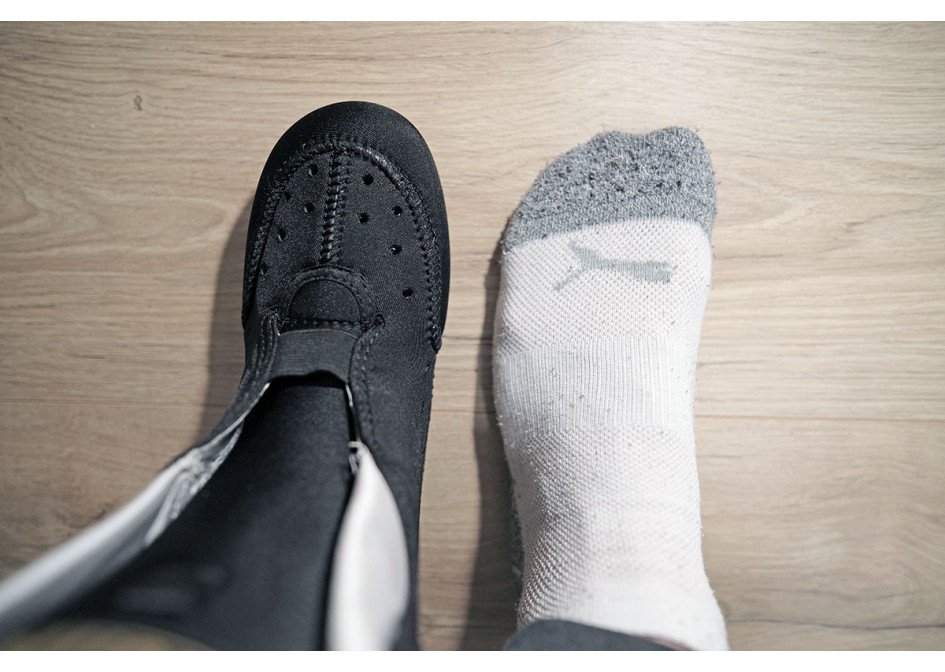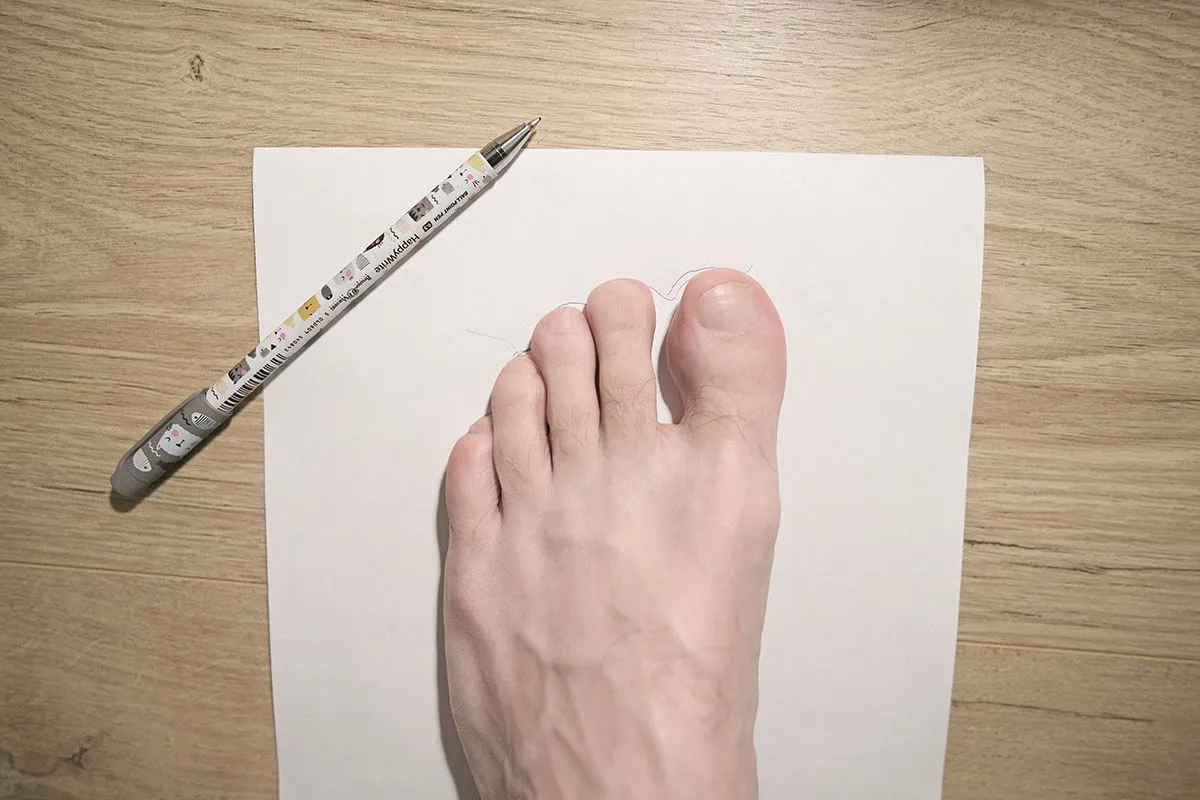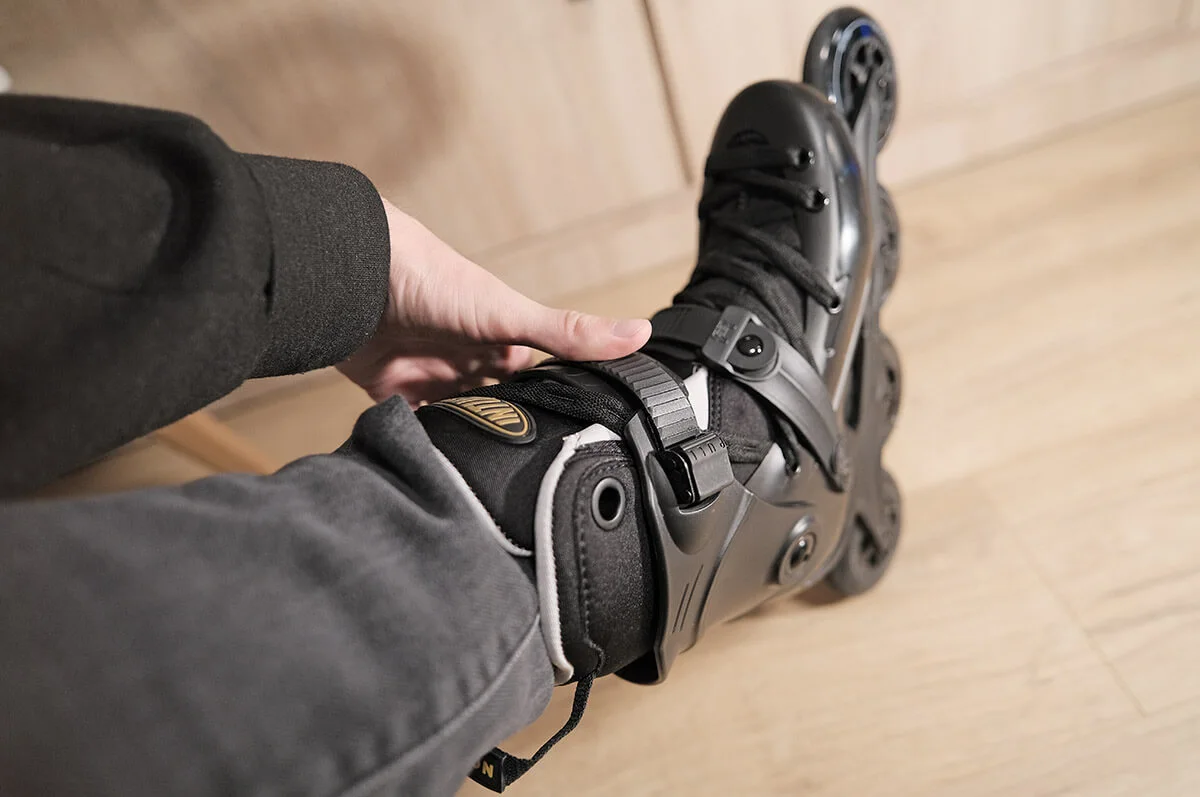Sizing instructions before choosing your perfect rollerblades

Millimeters are one of the most standard units to use for measuring your skate size. It is highly suggested to measure your foot length in millimeters when purchasing any skate.
You can check how to size roller blades and compare size charts here.
Go ahead and measure your foot without a sock.

Keep in mind that there will be a break-in period where your skates and liners will fit almost precisely and even a bit uncomfortable. This is normal to occur; while skating the liners tend to heat up and will eventually start molding to your foot size, causing them to stretch a bit. Eventually, they will feel and fit almost like a sock. Buy the skates and liners fitting precise, this will ensure that you will have the most accurate responsiveness from your skates.
Although a lot of skates can seem similar, all skates have their own separate size range and none can be compared. We strongly advise measuring your foot and using any inline skate size conversion charts provided to get the most accurate size to fit your foot. There are many sizing charts available online but the best ones you will find are the ones that are included in the description of the website you are shopping from.
How to size roller blades?
When choosing skate sizes, it's important to remember that millimeters are the universal scale for measuring. You need to measure your foot length in millimeters, ideally when you are wearing the socks you usually put on while skating. The possibility of your being carefree is diminished because you are advised to pick the same thickness of the socks as the ones you will be wearing during the skating period. The socks with different thicknesses from one to another can make liners excessively tight or slack, so use identical socks if possible. An initial stage of the liner material becoming more elastic or taking the contour of your foot will be present after the pair has been utilized and worn out for a while. Right after you get them, the skate should be tight to the feet. The skates with the liners that could be heat-molded are the only means that might work in this situation.
How to measure your feet for roller skates?
Measure your foot by laying a plain white paper on the floor up against the wall. Place your foot to the back of the wall while resting it flat on the plain sheet of paper. Now mark the longest part of your foot on the sheet of paper.

How to use the rollerblade fitting guide to select the appropriate size:
After taking the appropriate measurement of your foot, you can now decide which skate you would like to purchase. Inline skate sizing charts and tables are available in the description of the skate which helps guide you in choosing the correct size. They typically include instructions on how to size inline skates correctly as well. It’s recommended to purchase your skate to fit you a bit more snugly as opposed to when buying street shoes. Skates are supposed to fit snugly so that they could be responsive to your movements and provide a good riding experience. If you have flat or wide feet, we recommend getting 1 whole size up to give your feet a more relaxed fit inside of the skate.
Purchasing the wrong size skate will cause 1 of 2 things, either they are too small, causing pain and discomfort. If they are purchased too big you will also feel discomfort and chaffing because your foot will constantly be sliding back and forth. A skate that is bigger than what you actually need will lower the responsiveness rate of your skate. Responsiveness is critical when skating because you want your skates to follow your movements with accuracy as quickly as you react to scenarios while City/urban skating or even slalom skating. Incorrect sizing doesn’t allow you to have the proper control needed and can cause falls and other injuries.
What size rollerblades should I get?
Ideally, when purchasing your skates, the method of how they are tried on should be the same. Regardless if purchased online or at your local skate shop. To ensure that you have a good size fit, the skates should be tried on while being seated.

Sit your foot nice and firmly within, sit down and press your heels to the floor ensuring that your heel is properly seated into the back of the skate. Start lacing up your skates and for the best support, be sure to lace them up all the way. Lacing up your skates all the way to the top will secure your foot and improve the responsiveness of your skates. Having the proper responsiveness is very effective as this will remove any sort of lag when pushing your heels down through carves and turns while skating. It’s common for your skates to feel snug and tight when first trying them on, but don't worry, they will eventually break in and feel more comfortable after a few skating sessions.
Loose-fitting skates will decrease the amount of response you get from your skates. Eventually, you can get used to them but they are not ideal because they may cause some pain and even chaffing in certain parts of your foot. When trying on your skates, it’s imperative to bend your knees because this is the correct riding position and you will be in this position about 90% of your ride. If your skates feel comfortable while in this riding position, then you have successfully chosen the correct size. Some liners are removable and even heat moldable to get that “Perfect fit” to your foot. If they are not heat moldable then eventually after the break-in period they will feel a lot more comfortable.
Most, if not all, free-ride skates have a 45-degree strap and buckle system that allows you to attach your heels to the back of the skate. You should now be able to stand up straight and assess the fit after tying your laces and tightening all straps and buckles. Your toes should just barely make contact with the skates' front. You can now attempt bending your knees in a squatting or skating position since your toes should no longer be in contact with the end of the liners or boots. Most models of skates require break-in time, so if they are just a little too unpleasant to use for more than a few minutes, they will eventually mold to your feet and become a better fit. This is typically noted in the description of each individual skate description.
